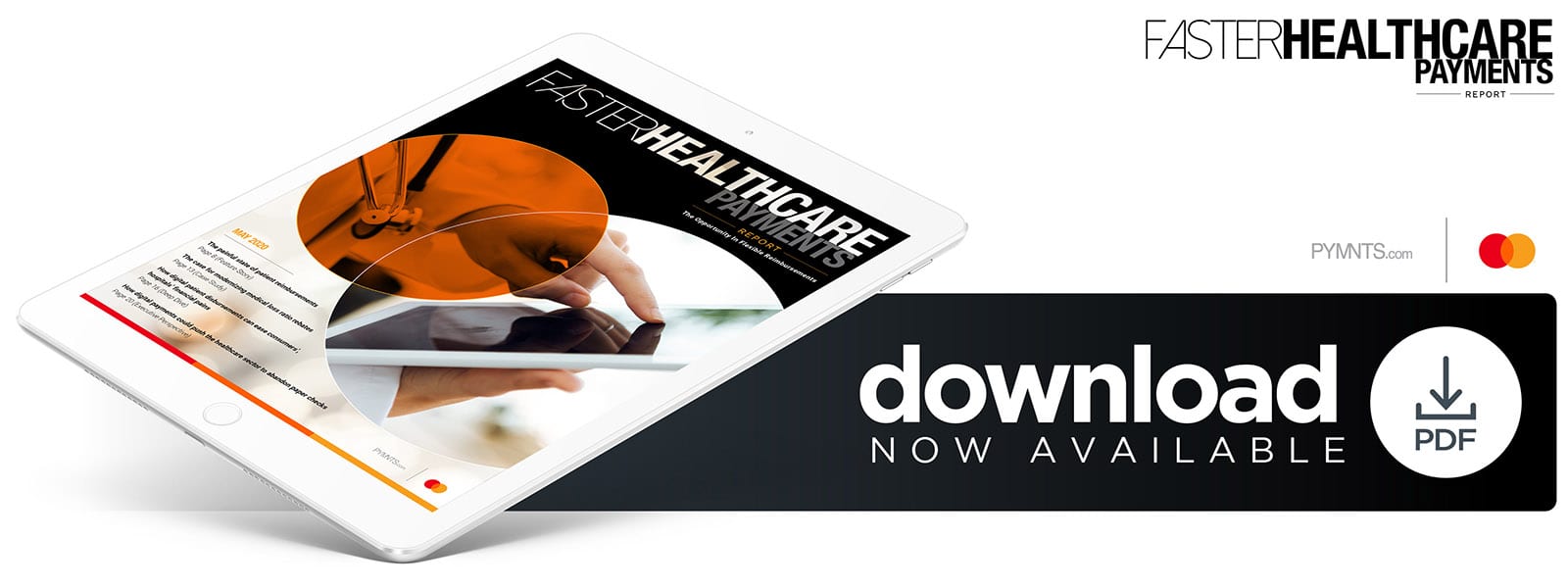Deep Dive: Modernizing Patients’ Reimbursements, Discounts

Financial pains are all too common for patients and service providers in the healthcare industry.
Patients can struggle to afford the high costs associated with medical care, and hospitals can struggle to keep the lights on when bill payments trickle in slowly. These were significant problems even before the COVID-19 pandemic caused additional strains. Many consumers have since lost their jobs, and healthcare providers have seen declining incomes as elective procedures, which are normally revenue drivers, have been delayed or canceled to prevent the virus’s spread.
Fast payments and settlements between all parties involved can help keep operations running smoothly, however.
Slow, paper-based payments do more than cause speedbumps in operations. They can also threaten healthcare providers’ bottom lines and consumers’ financial securities.
Healthcare providers, insurance companies and pharmaceutical manufacturers across the U.S. are thus looking for change and exploring ways to accelerate disbursements. This month’s Deep Dive examines the factors affecting the nation’s more than $103 billion healthcare market and how digital B2C solutions can streamline the payments process.
The Disappointing Speed of Reimbursements
Healthcare bills are divvied up in complicated ways, with insurance companies covering some expenses and patients handling the costs of deductibles, copays and more. Hospitals are sometimes uncertain how much of a bill will be covered by insurance, causing them to miscalculate when charging patients.
This confusion can result in consumers paying more than they owe and waiting on reimbursements, which can be a tediously long process. It reportedly took one patient three months of calling a hospital for her case to be reviewed and for the hospital to issue a refund. Slow approval is not the only problem, either. Patients must also often wait for their funds to arrive in the mail.
Consumers will likely be receptive to faster payment methods if their interactions with other services are any indication. PYMNTS research found that 51.6 percent of those surveyed wanted to receive their disbursements instantly, with approximately 38 percent wanting instant payments to arrive directly into their bank accounts, 11.7 percent onto debit cards, 10.8 percent on credit cards and 11.1 percent via prepaid cards. Payments’ speed continues to lag behind consumers’ demands, however, as only 42.2 percent of consumers reported receiving instant disbursements.
Reaching Real-Time Reimbursements
Companies in the healthcare and health insurance spaces are considering ditching paper checks and instead providing patient disbursements via digital methods. Insurance companies and healthcare providers could create greater customer loyalty by tapping into real-time payment rails to up their disbursement speeds, allowing patients to receive insurance funds and overpayment refunds directly and rapidly into their bank accounts.
Interest in real-time payment rails had been growing even before the pandemic added financial strains that made waiting for payments especially painful. A report estimated that the share of real-time medical payments made by insurance plans and healthcare providers will increase at a 100 percent compound annual growth rate (CAGR) from 2018 to 2022, indicating the field’s rising interest in these tools. Online bill payments currently made to providers and payers via automated clearing house (ACH), check and debit cards are particularly likely to be replaced by real-time methods by 2022.
Funding Pharmaceuticals Fast
Access to real-time disbursements may be on the horizon, but patients are turning to a variety of disbursement and financing tools in the meantime to help them better afford healthcare access. Many consumers cannot afford full supplies of medicine, forcing them to skip dosages and worsen their conditions. Twenty-three percent of Americans report deteriorating health resulting from attempts to avoid paying for needed medicine.
Some patients require daily or weekly medical treatments, meaning they must be equipped to handle years of pharmaceutical costs. The cholesterol drugs of one biopharmaceutical company, Amgen, cost patients $14,000 annually until recently, with many patients asked to pay up to $5,850 out of pocket. Such costs quickly add up for families that have to purchase multiple medications, and financial support is key to staying afloat.
Various efforts have emerged to help reduce prescription holders’ financial pains. Pharmaceutical manufacturers often disburse funds to help customers offset the prices that the companies set for their drugs. This can help manufacturers retain financially burdened customers without reducing prices for insurers or their broader consumer bases. Amgen sought to ease such pains by offering discounts to patients making five times the federal poverty limit or less. That meant individuals earning $60,700 or less annually — those whose incomes were 10 times the drug’s out-of-pocket costs or less — qualified and could gain assistance.
Amgen frequently delivers its assistance through copay cards preloaded with funds. One patient reported receiving up to $12,000 a year on copay cards to help manage the $48,000 he paid for an arthritis drug each year, for example. Rapid receipt of such funds is therefore critical to patients’ budgets, and few consumers want to risk skipping a dosage because their assistance is winding its way through the mail in the form of a paper check.
Startups like Penguin Pay provide other forms of help, such as interest-free loans to help consumers afford medications. Would-be borrowers apply online and, if approved, use company-brand cards to purchase drugs. Funds are repaid over up to a 12-week period.
Providing drug purchasing funds via cards appears to be a popular disbursement method, regardless of whether those funds are loans or pharmaceutical reimbursements. Quick payments to consumers help reduce financial strain for healthcare providers, as well. The faster patients receive their money, the faster they can make payments.
There are serious financial questions facing the healthcare industry, and slow, check-based disbursements are just one of the areas in which modernization could make an impact. Instant digital disbursements promise serious improvements, however, and real-time payment solutions are bound to boost consumers’ satisfaction with their healthcare reimbursements’ speed.
